Study on Centella Asiatica Triterpenes
Centella asiatica (L.) Urb. is also known as centella asiatica, horseshoe plant, horseshoe plant, etc. It is a perennial plant in the family Apiaceae. Its dried whole herb is used in medicine and has the effect of clearing away heat and dampness, detoxifying and reducing swelling. It is widely distributed in China, mainly concentrated in the area south of the Yangtze River[1]. Centella asiatica is rich in chemical components such as triterpenoids, flavonoids, polyacetylenes, and essential oils. Among these, triterpenoid components such as asiatic acid, madecassic acid, asiaticoside, and madecassoside are considered to be its main bioactive substances (Figure 1). They have neuroprotective, wound-healing, anti-inflammatory, antioxidant, anti-aging, anti-allergic effects, and are widely used in the treatment of skin diseases such as skin burns, ulcers, psoriasis, and scleroderma, as well as in the beauty industry for acne removal, soothing, freckle removal and whitening, and anti-aging [2-4]. Therefore, centella asiatica is widely used in the preparation of pharmaceutical and cosmetic additives and is an important wild plant resource.
The triterpenoid components asiaticoside and madecassoside are the marker components of Centella asiatica in the 2020 edition of the Chinese Pharmacopoeia, and their total content is required to be not less than 0.8% [5]. The content of the above compounds varies greatly in Centella asiatica from different origins and harvest periods[6], resulting in unstable quality of Centella asiatica plant resources. In addition, due to the unlimited harvesting of Centella asiatica wild resources, coupled with the limitations of artificial cultivation conditions and resources, as well as the low extraction efficiency of triterpenoid saponins such as asiaticoside and madecassoside and the complexity of their chemical structures, the current production level still cannot meet the global market demand for Centella asiatica triterpenoid components, limiting their application in the food, pharmaceutical, and cosmetic industries [7-8].
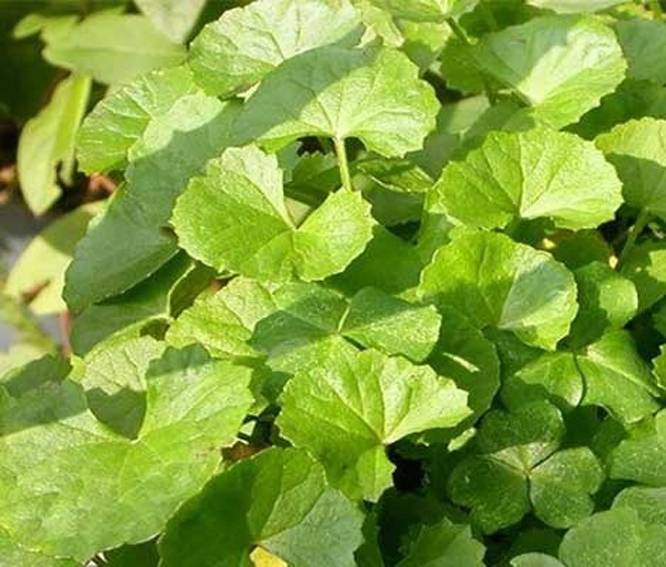
Synthetic biology and heterologous reconstruction of biosynthesis pathways are effective strategies for solving the problem of complex natural plant products. Researchers have successfully used synthetic biology to obtain saponarioside B from Centella asiatica, QS-21 vaccine adjuvant, soyasaponin A, marigold glycoside E, ginsenosides and other triterpenoid saponins [9-12]. Therefore, this study systematically organized the biosynthetic pathway of Centella asiatica triterpenoids and the key genes in its metabolic pathway, and analyzed the progress and prospects of metabolic regulation and heterologous biosynthesis of the above Centella asiatica triterpenoids, with a view to further promoting research related to the biosynthesis, industrial production and functional product development of Centella asiatica triterpenoids.
1 Centella asiatica triterpenoid saponins and their pharmacological activities
Triterpenoid saponins are natural compounds with a triterpenoid skeleton of six isoprene units (C5H8) to which one or more sugar moieties or other groups are attached [13]. Centella asiatica's triterpenoids are its main active ingredients. To date, more than 40 triterpenoid compounds have been successfully isolated and structurally identified from Centella asiatica. These compounds are mainly classified as ursane-type and oleanane-type [14]. The triterpenoid saponins contain aglycones and glycosides. The aglycones in Centella asiatica are mainly asiatic acid, madecassic acid, arjunolic acid, terminolic acid, madasiatic acid, lsothankunic acid, isoasiatic acid, etc.[14]. In triterpene saponins, the hydroxyl group at C-28 of the aglycone is usually linked to a sugar chain with diverse structures via an ester bond to form an ester glycoside[15].
The highest content is asiaticoside, madecassoside, and asiaticoside B (asiaticoside B), which can account for 80% or more of the total asiaticoside content [16]. Centella asiatica acid and hydroxycentella asiatica acid are ursane-type triterpene saponins. The C-28 position is linked to a single glucose to form the monosaccharide glycoside quadranoside Ⅳ and centelloside C. The C-28 position is linked to glucose-glucose to form the disaccharide asiaticoside E and centellasaponin B, and C-28-linked glucose-glucose-rhamnose as trisaccharides asiaticoside and asiaticoside E. Arjunolic acid and arjunic acid are oleanane-type triterpene saponins. The C-28-linked single glucose (arjunoglucoside II, chebuloside Ⅱ), disaccharide (asterbatanoside B, centelloside D), and glucose-glucose-rhamnose chain (scheffoleoside A, asiaticoside B) are the corresponding monosaccharide, disaccharide, and trisaccharide isomers of asiatic acid and madecassic acid, respectively. There are a large number of isomers of ursane and oleanane structure isomers in asiatic acid, which have very similar physical and chemical properties. It is difficult to separate the isomers using common chromatographic conditions.
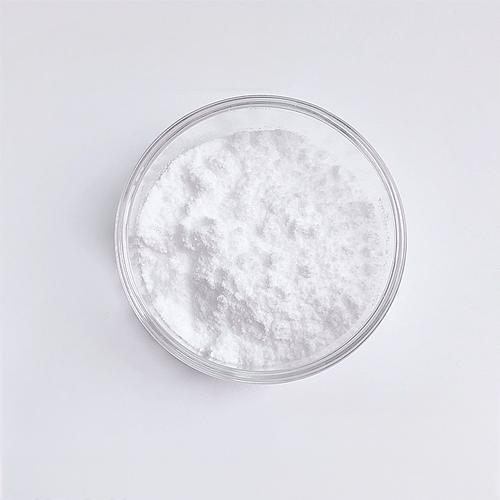
Therefore, researchers usually add a certain concentration of β-cyclodextrin (β-CD) or γ-cyclodextrin (γ-CD) to the mobile phase. Using its characteristics of being hydrophilic on the outside and lipophilic on the inside, the isomers are embedded in it, and the inclusion complexation causes different steric hindrances, thereby allowing the isomers to be separated with different retention times [17-19]. In addition, in addition to pentacyclic triterpenes and their glycosides, there are also some tetracyclic triterpene saponins, such as notoginsenoside SFt3, notoginsenoside SFt4, and other dammarane-type tetracyclic triterpene saponins [20-21]. The author has summarized the triterpenoid components of Centella asiatica with CAS numbers and related literature (Table 1). The structural formulas can be obtained from SCI Finder (https://scifinder-n.cas.org/).
The rich triterpene saponin content of Centella asiatica gives it a wide range of pharmacological activities, such as anti-neurodegenerative, anti-depressant and anti-anxiety, anti-epilepsy, etc., and it has a good effect in the treatment of metabolic diseases, respiratory diseases, digestive diseases, etc., especially in the treatment of skin-related diseases [2]. Centella asiatica extract and its triterpenes have a certain therapeutic and alleviating effect on acne, baldness, vitiligo, atopic dermatitis, wound healing, scar repair, etc. [22]. Researchers have found that asiatic acid, madecassic acid, asiaticoside, and madecassoside in centella asiatica extract have certain transdermal absorption capabilities and are non-toxic. They have been added to various preparations to treat skin diseases [22]. Hydrogels containing Centella asiatica extract and electrospun gelatin membranes promote wound healing by affecting the proliferation of fibroblasts and collagen synthesis, and show a faster wound healing rate than unaddressed formulations [23-24].
Asiatic acid can significantly reduce the expression of inflammatory response factors such as TNF-a and IL-1 β, as well as the expression of local immune response factors such as IgE, inhibit hyperkeratinization, mast cell and inflammatory cell infiltration [25]; hydroxycentella asiatica acid can reduce the expression of pro-inflammatory cytokines IL-1b and TLR2, promote the secretion of AQP3, LOR and IVL by HaCaT keratinocytes and the secretion of hyaluronic acid by human skin fibroblasts, showing great therapeutic potential for atopic dermatitis [26]. Centella asiatica extract has significant effects in anti-skin aging, anti-oxidation, and improving skin barrier hydration. It also reduces skin pigmentation and improves skin vitality. It is added to various skin care products and beauty products and has great market prospects [27].
JIANG H et al. [28] confirmed that asiaticoside significantly treats photoaging of the skin by inhibiting ROS and TGF-β1/Smad signaling pathways to slow down photoaging. Centella asiatica extract can effectively fight skin aging by enhancing cell vitality, stabilizing telomere length, and inhibiting the accumulation of glycation substances [29]. Hydroxy asiaticoside can effectively improve skin hydration by enhancing the expression of aquaporin 3 and hyaluronic acid secretion, thereby effectively improving skin hydration [26]. In addition, Centella asiatica complex extract effectively reduces skin damage and pigmentation, and shows brightening and regenerating effects. Centella asiatica saponin significantly increased superoxide dismutase activity and vascular endothelial growth factor expression in rat experiments, optimizing microcirculation, enhancing skin vitality, and inhibiting tyrosinase mRNA translation and MITF binding to DNA, reducing melanin production and tyrosinase gene expression, effectively combating pigmentation. In short, the above studies have highlighted the medical and cosmetic application potential of Centella asiatica extract in skin protection and repair.
2 Accumulation of triterpene saponins in Centella asiatica
The secondary metabolites accumulated in plants are not only substances necessary for their own growth, but also an important part of the plant defense system against pathogen attacks and environmental stress. Due to their significant biological activities, more and more plant secondary metabolites are being discovered and used as pharmaceutical ingredients and food additives. The accumulation process is significantly affected by various factors, such as genetics, individual differences, environmental factors, harvest time, etc. The content of asiaticoside and madecassoside in Centella asiatica harvested at different times varies greatly. Liu Xiaoqi et al. [72] analyzed Centella asiatica harvested in 12 months of the year and found that the dry matter content, leaf content, and the content of asiaticoside and madecassoside in the leaves of Centella asiatica harvested from July to September were significantly higher throughout the year, and the total amount harvested from March to May was significantly higher than that harvested from November to January.
Wan Lingyun et al. [73] studied the composition of Centella asiatica leaves with ages of 10, 20, 30, and 40 days, and detected 14 triterpene saponins that showed significant differences in different growth stages. Han Xiaoyang et al. found the content of asiaticoside and madecassoside in the roots, stems and leaves of Centella asiatica. The results showed that the accumulation of these two compounds in different parts was similar, with the highest content in the leaves, followed by the stems and roots. It was also found that the content of asiaticoside was slightly higher than that of madecassoside in different parts [74]. In the metabolome analysis of different parts of Centella asiatica roots, stems and leaves, the content of asiaticoside in the leaves was significantly higher than that in the stems, followed by the stems, and the lowest in the roots [75].
The content of active ingredients (aspartic acid, hydroxyaspartic acid and their saponins) in Centella asiatica from different origins varies greatly [76]. In a study of whole plant samples of Centella asiatica from India, the average asiaticoside content of most samples was about 3 mg·mL-1 DW, the hydroxyasiaticoside content was 15–20 mg·mL-1 , and the total triterpenoid content was about 30 mg·mL-1 DW [77]. Malaysian Centella asiatica was tested and found to have the highest content of triterpenoids in the leaves, with a mass fraction of asiaticoside of 11.5 mg·mL-1 DW and madecassoside of 16.5 mg·mL-1 DW [76].
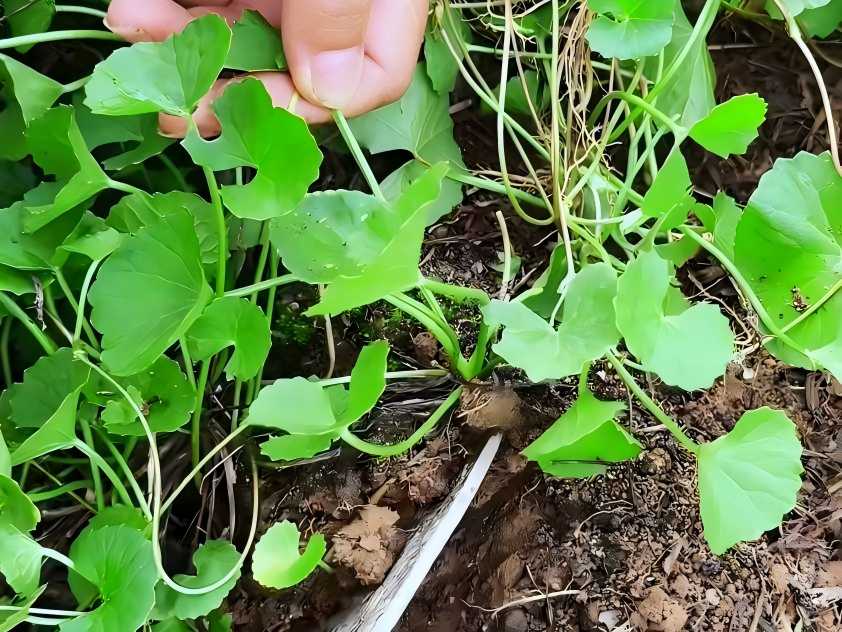
The content of pentacyclic triterpenes in the whole herb of Centella asiatica in Thailand varies with the cultivation site and harvest period, and the highest total pentacyclic triterpenes content is 37.2 mg·mL-1 DW [15]. A study examined the content of asiaticoside, as well as their aglycones. It was found that the above four pentacyclic triterpenoids were highly accumulated in the leaves and almost existed in the form of glycosides [10]. At the same time, the content of the above four components in Centella asiatica collected in March, July and December from Trang, Songkhla, Phatthalung, Nakornsrithammarat, Ratchaburi and other places in Thailand, the content of the above four components was detected in Centella asiatica collected in March, July and December. It was found that the ratio of glycosides and aglycones varied greatly among different harvest locations and harvest times [10]. Light is one of the main environmental factors affecting the accumulation of secondary metabolites in plants. Huang Yanfen et al. [78] studied the effects of different LED light qualities on the growth of Centella asiatica and the content of asiaticoside and madecassoside. They found that red light culture is beneficial to the growth of Centella asiatica and the accumulation of total asiaticoside production, and red and blue light (7:3) is beneficial to the formation and accumulation of asiaticoside and madecassoside content.
Although the content of triterpenoid saponins in Centella asiatica obtained from different origins, harvest times and cultivation conditions varies greatly, these compounds are highest in the leaves, followed by the stems, and the roots of the entire plant have very low content, which is almost the same as previous research results, indicating that the triterpenoid saponins of Centella asiatica tend to be specifically synthesized and accumulated in the leaves, which is also consistent with the medicinal parts. In addition, these factors also affect the ratio of the content of triterpene saponins and glycosides in Centella asiatica, which may affect the efficacy of Centella asiatica extracts, because asiatic acid and madecassic acid have higher anti-inflammatory activity than asiaticoside and madecassoside [79], while asiaticoside and madecassoside have good wound healing activity.
3 Biosynthetic pathway of asiaticoside triterpenoid saponins
The triterpenoid saponins in Centella asiatica are divided into ursane and oleanane saponins [7]. Asiaticoside and madecassoside belong to the ursane triterpenoid saponin structural type. The precursor of triterpenoid components, farnesyl pyrophosphate (FPP), is mainly derived from the mevalonate pathway (MVA), with a small proportion derived from the methylerythritol phosphate pathway (MEP) [81]. FPP is mainly derived from the mevalonate pathway (MVA), and to a lesser extent from the methylerythritol phosphate pathway (MEP) [81-82]. FPP is catalyzed by squalene synthetase (SQS) to form squalene, which is then converted by squalene epoxidase (SQE) to 2,3-oxidosqualene, and finally cyclized by oxidosqualene cyclases (OSC) to forming α-amyrin and β-amyrin [83-85]; α-amyrin and β-amyrin are then successively oxidized at C-28 by the P450 enzymes CYP716A83/CYP716A86 to form the ursolic acid ursolic acid and oleanolic acid skeletons, respectively [86].
Ursolic acid is hydroxylated at the C-2 and C-23 positions by CYP714E19 and CYP716C11 to form centelloside, which is then hydroxylated at the C-6 position by CYP714E41 to form hydroxyl centelloside [86-87]. Asiatic acid and madecassic acid are glycosylated at C-28 by UGT73AD1 or UGT73AH1 or UGT1 to form the corresponding asiatic acid monoglucoside (2α,3β,23α-trihydroxyurs-12-ene-28-oic acid-28- O-β-D-glucopyranoside) and hydroxymatric acid monoglucoside (madecassic acid monoglucoside, 2 α,3β,6β,23 α-tetrahydroxyurs-12-ene-28-oic acid-28-O- β-D-glucopyranoside) [88-90] (Figure 2).
Recently, the team of Zhou Jingwen at Jiangnan University obtained the expression of candidate UGTs by transcriptome analysis of different parts of Centella asiatica, including roots, stems and leaves. Combined with in vitro enzymatic reactions, they screened and obtained asiatic acid diglucosides (2 α,3 β, 23 α-trihydroxyurs-12-ene-28-oic acid-28-O-β-D-glucopyranoyl(1 → 6)-O-β-D-glucopyranoside) glucosyltransferases (CaUGT73C7 and CaUGT73C8) and rhamnosyltransferases (CaRRT1~5) that produce asiatic acid diglucosides and asiatic acid, were the first to elucidate the biosynthetic pathway of asiaticoside [91].
Shortly thereafter, based on the asiaticoside transcriptome data and taking advantage of the spatial specificity of the accumulation of asiaticoside and madecassoside in Centella asiatica, using co-expression analysis, successfully identified CaUGT3 and CaUGT4, which are involved in the synthesis of the characteristic C-28 glycosyl chains of asiaticoside and madecassoside. CaUGT3 loads the second glucose of the characteristic glycosyl chain in a 1 →6 linkage manner, catalyzing their monosaccharide glycosides to be madecassic acid diglucosides and hydroxymadecassic acid diglucosides (madecassic acid diglucosides, 2 α,3β,6 β,23 α-tetrahydroxyurs-12-ene-28-oic acid-28-O-β-D-glucopyranoyl(1 →6)-O-β -D-glucopyranoside), and then the third rhamnose of the characteristic sugar chain was added to form asiaticoside and madecassoside under the action of CaUGT4 with 1 →4 linkage.
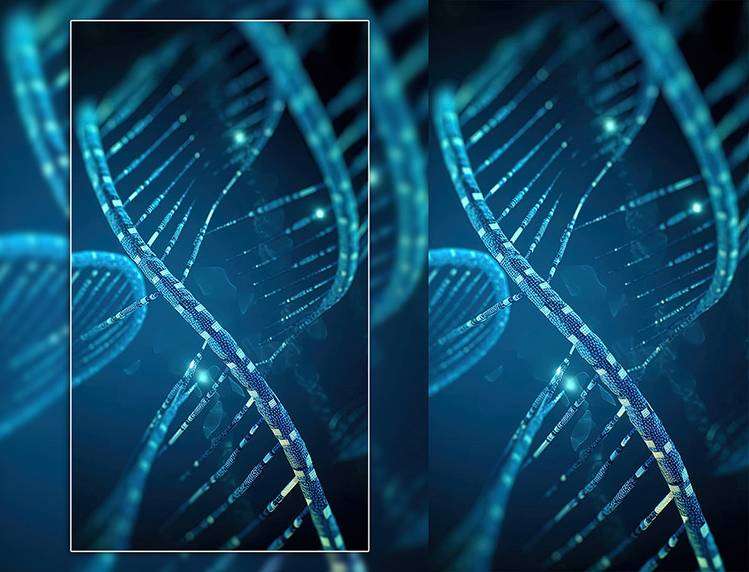
The research team used protein structure prediction, molecular docking, and site-directed mutagenesis experiments to find that the two adjacent amino acids responsible for fixing the C-5 group of the sugar donor are essential for the glycosyl donor selectivity of CaUGT3 and CaUGT4 [74]. The above two studies completely elucidated the biosynthetic pathways of asperulosidic acid and madecassoside, filling the gaps in the elucidation of the biosynthetic pathways of asperulosidic acid and madecassoside, and laying the foundation for the subsequent in vitro synthesis of these valuable triterpenoids using synthetic biology.
Oleanolic acid can also be hydroxylated at the C-2 and C-23 positions by CYP714E19 and CYP716C11 to produce arjunolic acid. In a recent report, researchers from India discovered the biosynthetic pathway of arjunolic acid. CYP716A233 and CYP716A432 carried out three consecutive oxidations of β-damascenol to generate oleanolic acid, and then CYP716C88 and CYP716C89 carried out C2-position hydroxylation, and CYP714E107a and CYP714E107b carried out C23-position hydroxylation to generate arjunolic acid [92]. Based on the structure, it is speculated that ajmalic acid is likely to be hydroxylated at the C-6 position by CYP714E41 to form terminolic acid. The structures of ursolic acid and oleanolic acid are very similar, differing only in the methyl positions of C-19 and C-20, so it is speculated that they may have some common biological catalysis. Scheffoleoside A and asiaticoside B, isolated from Centella asiatica, are based on ajugolic acid and terminolic acid, respectively, and have a unique glucose-glucose-rhamnose chain linked at the C-28 position, similar in structure to that of asiaticoside and madecassoside.
Due to the promiscuous nature of the substrate of glycosyltransferases, it can be inferred from structural information and isolation information of Centella asiatica compounds that arjunolic acid and arjunic acid can be catalyzed by UGT73AD1/UGT73AH1/UGT1 to form arjunoglucoside (Ⅱ, 2 α,3 β,23-trihydroxyolean-12-en-28-oic acid-28-O-β-D-glucopyranoside), chebuloside Ⅱ, 2 α,3 β,6β,23-tetrahydroxyolean-12-en-28- oic acid-28-O-β-D-glucopyranoside), and then a second glucose group is added at the C-28 position by CaUGT73C7/CaUGT73C8/CaUGT3 to form asterbatanoside B (2 α,3β,23-Trihydroxyolean-12- en-28-oic acid-28-O- β-D-glucopyranoyl(1 → 6)-O- β-D-glucopyranoside) and centelloside D (2 α,3β,6β,23-tetrahydroxyolean-12-en-28-oic acid-28-O-β-D-glucopyranoyl(1 → catalyzed by rhamnosyltransferase CaRRT1~5/CaUGT4 to produce the corresponding trisaccharides scheffoleoside A and asiaticoside B. The putative pathway still needs to be further verified experimentally to demonstrate the biosynthetic pathway from ajmalic acid and ajmalic acid to scheffoleoside A and asiaticoside B.
4 Regulation of the biosynthetic process of asiaticoside and heterologous biosynthesis
Due to environmental complexity and geographical constraints, traditional methods, which rely on direct extraction from the original plant, have encountered significant limitations at an industrial scale. In particular, wild Centella asiatica communities prefer to grow in humid areas, and these areas are often threatened by heavy metal pollution and other harmful chemicals, which may make it difficult to use wild samples due to excessive heavy metal and microbial content [93]. Furthermore, neither the scale of Centella asiatica's artificial cultivation nor its wild resource reserves can meet the growing demand of the pharmaceutical, daily chemical and other industries. In view of this, in vitro culture technology has emerged as an innovative and potentially powerful alternative. It can cultivate Centella asiatica in a large-scale and high-quality manner in a stable and uniform environment, thereby efficiently producing the required secondary metabolites and opening up a new way to obtain Centella asiatica resources [94-95].
In vitro culture techniques include callus culture, hair root culture, and suspension cell culture. They can not only preserve high-quality Centella asiatica germplasm, but also massively amplify and propagate it, or be used as bioreactors to obtain the target triterpenoid saponins [96]. PRASAD A et al. [97] obtained Centella asiatica shoots propagated in vitro by adding Cu2+, NH4+-N:NO3--N, etc., to obtain Centella asiatica shoots propagated in vitro, in which the mass fraction of asiaticoside increased from 5.3 mg·mL-1 DW to 8.9 mg·mL-1 DW. In addition, the researchers found that the asiaticoside content could also be increased by adjusting the sucrose concentration (7.2 mg·mL-1 DW). GANDI S et al. [98] used asiatic callus to produce (1.46±0.06) mg·mL-1 FW asiatic acid. The callus and suspension cells induced from the South African source of Centella asiatica are rich in triterpene saponins, such as asiatic acid with a mass fraction of 1.5–2.5 mg·mL-1 DW, madecassic acid with a mass fraction of 1.5–3 mg·mL-1 DW, asiaticoside with a mass fraction of 14–29 mg·mL-1 DW, and madecassoside at 13–28.4 mg·mL-1 DW [99].
Suspension cells of Centella asiatica cultivated in a 5 L bioreactor can produce up to 60.08 mg·mL-1 DW madecassoside under optimal culture conditions [100]. The hairy root culture can be grown in a fermenter and is commonly used in metabolic engineering and is considered an effective method for producing secondary metabolites. KIM O T et al. [101] applied 0.1 mmol · L-1 methyl jasmonate (MeJA) as an inducer to Centella asiatica hairy root culture, which produced a large amount of asiaticoside (7.12 mg·mL-1 DW), a content significantly higher than that of the control group. BAEK S et al. [102] used 2.5 mmol ·L-1 squalene and 5 mmol ·L-1 pyruvate treatment to enhance the biosynthesis of target triterpenoids in Centella asiatica hairy roots, the total triterpene saponin mass fractions were 57.53 and 29.13 mg·mL-1 DW, respectively. In addition, the research team found that the content of triterpene saponins produced in Centella asiatica hairy root cultures treated with 400 μmol·L-1 MeJA was as high as 60.25 mg·mL-1 DW.
In addition to in vitro culture, researchers often use tobacco and yeast as chassis cells to heterogeneously synthesize target products [103]. Professor Zhou Jingwen's team at Jiangnan University used a laboratory-stored strain of GAL80 knockout Saccharomyces cerevisiae as the chassis strain, overexpressing key genes in the MVA pathway and the squalene synthesis pathway to obtain a strain with a β-amyrin production of 125.8 mg·L-1. and then introduced the CYP716A12 and ATR1 genes, and combined the CYP716A12:ATR1 expression ratio and enhanced acetyl coenzyme A supply and NADPH regeneration. The production levels in the erucic acid shake flask and 5 L fermenter reached 304.0 and 680.8 mg·L-1, respectively [104]. Using a similar strategy, the team obtained an ursolic acid yeast factory with a yield of 74.6 mg·L-1 [105]. In addition, after elucidating the biosynthetic pathway of asiaticoside, the team metabolically engineered Saccharomyces cerevisiae by knocking out the glycosidase EGH1 that degrades asiaticoside and introducing key pathway enzymes. After a series of metabolic engineering modifications, the de novo biosynthesis of asiaticoside was achieved in a 5 L fermenter, with a yield of 772.3 μg·L-1 . This is the first time that the complete pathway for asiaticoside has been identified and synthesized de novo in microorganisms [91].
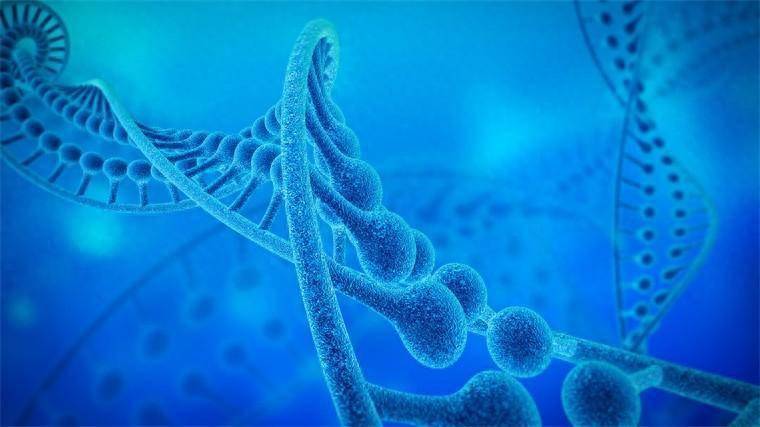
Professor Li Chun's team at Tsinghua University induced the promoter to regulate the rate-limiting step, enhanced the expression of key genes in the oleanolic acid synthesis pathway, expanded the precursor pool, reconstructed the pathway, and constructed a diploid to increase oleanolic acid production. Finally, a combination of multiple strategies in a 100 L bioreactor resulted in a oleanolic acid yield of 4.07 g·L-1 , which is the highest level reported to date [106]. The team and Wang Ying's team from Beijing Institute of Technology optimized cytochrome P450 and CPRs, and then adjusted the supply of acetyl coenzyme A and NADPH/NADH through cofactor engineering. Finally, the team used engineered bacteria WN85 for fed-batch fermentation, and the production of ursolic acid reached (2 300 ± 180) mg·L-1 , which is the highest yield of ursolic acid synthesized by microorganisms [107].
After SRIVASTAVA G et al. [93] elucidated the biosynthetic pathway of ursolic acid in the ashwagandha tree, CYP714E107a/CYP714E107b, β-amyrin synthase, CYP716C88, and CYP716A233, and the ajmalicine acid product can be detected. The team of Irina Borodina at the Technical University of Denmark has engineered the yeast Saccharomyces cerevisiae to produce three valuable plant triterpenoids (gynosteroic acid, hydroxygynosteroic acid and ajmalicine acid) through fermentation. among which the yield of ajmalic acid was increased to 9.1 mg·mL-1 DCW[108] by exchanging the N-terminal domain of CaCYP714E19p with the N-terminal domain of cytochrome P450 enzyme. The above research results provide a rich supply of precursors for the biosynthesis of asiaticoside and other similar triterpene saponins, and provide a valuable reference for the subsequent heterologous synthesis of these components from scratch.
5 Conclusion and outlook
Centella asiatica is a perennial creeping plant in the family Apiaceae, which is widely distributed and occupies an important position in traditional Chinese medicine and Ayurvedic medicine in India. The Shennong Bencao Jing (Shennong's Classic of Materia Medica) states that Centella asiatica “treats severe fever, malignant sores and carbuncles, red and inflamed skin, and fever with red skin”. The Song Dynasty Su Shou Lai (Su Shou's Book) and Zheng Lei Ben Cao (Zheng Lei's Materia Medica) describe it as “Centella asiatica, bitter, cold, non-toxic, suitable for treating fever and skin diseases”, indicating that Centella asiatica has been used to treat skin diseases since ancient times. With the development of pharmacology, Centella asiatica was found to have more pharmacological activities. The abundant triterpenoid saponins in Centella asiatica are widely used in the pharmaceutical and chemical industries, and their unique biological activities have brought revolutionary progress to these industries. However, the traditional method of directly extracting these substances from plants faces many challenges, such as low efficiency and high cost. Meanwhile, chemical synthesis, although an alternative, is often associated with harsh reaction conditions, operational complexity and environmental pollution, limiting its widespread application.
In contrast, the advantages of synthetic biology in the production of Centella asiatica triterpenoids, such as environmental friendliness, a wide range of raw materials and significant cost-effectiveness, stand out and make it a new method for obtaining these compounds. With the vigorous development of synthetic biology, this field has opened up unprecedented ways for the heterologous and efficient production of natural products derived from plants. Using yeast and tobacco as “cell factories” and callus and hairy roots as bioreactors, scientists have carefully designed and optimized metabolic pathways, demonstrating great potential and prospects for the biosynthesis of natural active ingredients. In particular, the use of synthetic biology strategies to heterologously synthesize asiaticoside in yeast chassis cells not only has low raw material costs, but also the entire fermentation preparation process is safe and controllable, laying a solid foundation for large-scale production.
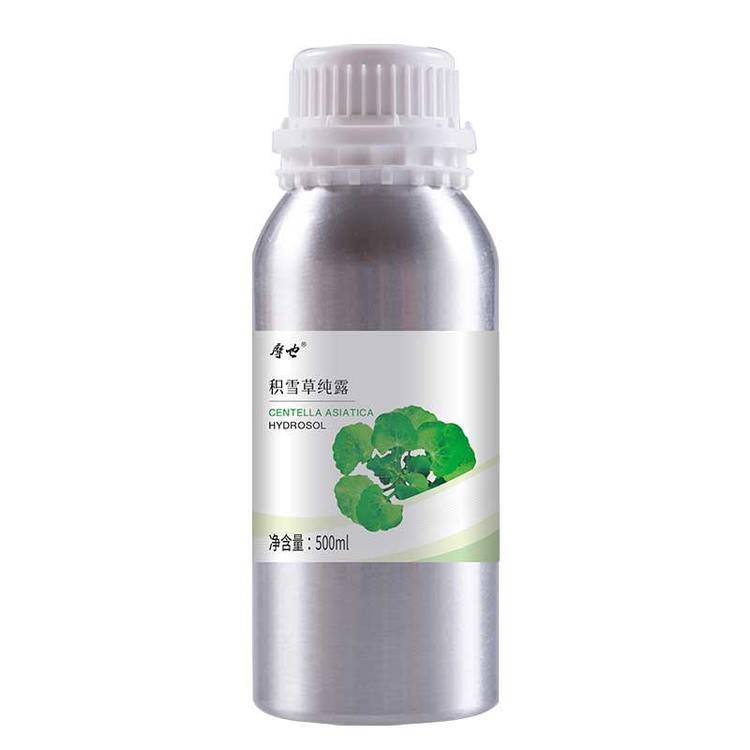
In recent years, the attention to Centella asiatica extract has continued to increase, and the global demand for ingredients such as asiaticoside is extremely high. Therefore, researchers are committed to studying Centella asiatica varieties with high triterpenoid content and using metabolic engineering and genetic engineering methods to obtain the target active ingredients. Although the triterpenoid structure of Centella asiatica is complex, with the integration and application of multi-omics technologies such as genomics, transcriptomics, and proteomics, its biosynthesis pathway has gradually been elucidated, thus promoting the biosynthesis of triterpenoid components in Centella asiatica. At present, although Centella asiatica glycosides can be synthesized based on Saccharomyces cerevisiae, the yield is low, which is still far from the level required for industrial production to replace the current extraction process.
The total synthesis of triterpenoid saponins using Saccharomyces cerevisiae is still a huge challenge. Since it contains a large number of glycoside hydrolases that can seriously interfere with the biosynthesis of triterpenoid saponins, researchers have adopted the method of knocking out the glycoside hydrolases of Saccharomyces cerevisiae to improve the yield, but the effect is still minimal. In the future, it may be possible to choose yeast, other microbial chassis bacteria for fermentation and synthesis. The continuous advancement of multi-omics technology, molecular breeding, gene editing,metabolic engineering, synthetic biology and other technologies is expected to fully unravel the mystery of the biosynthesis of triterpenoids in Centella asiatica, bringing more green, efficient and sustainable raw material solutions to the pharmaceutical and cosmetics industries.
Reference:
[1] GRAY N E, ALCAZAR M A, LAK P, et al. Centella asiatica-phytochemistry and mechanisms of neuroprotection and cognitive enhancement[J] . Phytochem Rev, 2018, 17(1): 161.
[2] SUN B, WU L, WU Y, et al. Therapeutic potential of centella asiatica and its triterpenes: a review[J] . Front Pharmacol, 2020, 11: 568032.
[3] JAMES J T, DUBERY I A. Pentacyclic triterpenoids from the medicinal herb, Centella asiatica (L.) Urban[J] . Molecules, 2009, 14(10): 3922.
[4] Peng Qian, Xie Wenli, Chen Jingyi, et al. Transdermal properties and mechanism of Centella asiatica asperulosid nanoemulsion and nanoemulsion gel. Chinese Journal of Traditional Chinese Medicine, 2018, 43(9): 1857.
[5] National Pharmacopoeia Commission . Pharmacopoeia of the People's Republic of China . Part I [M] . Beijing: China Medical Science and Technology Press, 2020.
[6] Lin Chen, Wang Bin, Liu Juzhao, et al. Research progress on the chemical composition and pharmacological effects of Centella asiatica and its quality marker prediction analysis [J]. Chinese Medicine Information, 2023, 40(8): 70.
[7] HE L, HONG G, ZHOU L, et al. Asiaticoside, a component of Centella asiatica attenuates RANKL -induced osteoclastogenesis via NFATc1 and NF-kappaB signaling pathways[J] . J Cell Physiol, 2019, 234(4): 4267.
[8] THONG-ON W, PATHOMWICHAIWAT T, BOONSITH S, et al. Green extraction optimization of triterpenoid glycoside-enriched extract from Centella asiatica (L.) Urban using response surface methodology (RSM)[J] . Sci Rep, 2021, 11(1): 22026.
[9] JO S, EL-DEMERDASH A, OWEN C, et al. Unlocking saponin biosynthesis in soapwort[J] . Nat Chem Biol, 2024 ,doi:10.1038/s41589-024- 01681-7.
[10] LIU Y, ZHAO X, GAN F, et al. Complete biosynthesis of QS-21 in engineered yeast[J] . Nature, 2024, 629(8013): 937.
[11] YUAN J, MA L, WANG Y, et al. A recently evolved BAHD acetyltransfer ase, responsible for bitter soyasaponin A production, is indispensable for soybean seed germination[J] . J Integr Plant Biol, 2023, 65(11): 2490.
[12] LI Y, WANG J, LI L, et al. Natural products of pentacyclic triterpenoids: from discovery to heterologous biosynthesis[J] . Nat Prod Rep, 2023, 40(8): 1303.
[13] Zhang Lu, Xiao Yao, Liu Minzhi, et al. Research progress on the biosynthesis of ursane-type pentacyclic triterpenes [J]. China Pharmaceutical Biotechnology, 2024, 19(3): 223.
[14] AZERAD R. Chemical structures, production and enzymatic transformations of sapogenins and saponins from Centella asiatica (L.) Urban[J] . Fitoterapia, 2016, 114: 168.
[15] PUTTARAK P, PANICHAYUPAKARANANT P. Factors affecting the content of pentacyclic triterpenes in Centella asiatica raw materials[J] . Pharm Biol, 2012, 50(12): 1508-1512.
[16] Zheng Xingfang. Separation and purification of homologue of pentacyclic triterpene saponins in Centella asiatica [D]. Hangzhou: Zhejiang University, 2011.
[17] Pan Jian, Kai Guiqing, Yuan Chuanxun, et al. Separation and determination of madecassic acid in madecassoside by β-cyclodextrin mobile phase additive method [J]. Chromatography, 2007 (3): 316.
[18] Wu Bo, Mao Rengang, Song Chunqing, et al. Determination of asiatic acid B monoglucoside, hydroxyasiatic acid monoglucoside and asiatic acid monoglucoside in the conversion products of asiaticoside by HPLC [J]. Natural Product Research and Development, 2012, 24 (S1): 54.
[19] YANG Ruomeng, TIAN Jun, LI Yuncheng. Optimization of the determination method of the main triterpenoids in Centella asiatica. Journal of Northwest Botanical College, 2024, 44 (10): 1639.
[20] WENG X X, SHAO Y, CHEN Y Y, et al. Two new dammarane monodesmosides from Centella asiatica [J]. J Asian Nat Prod Res, 2011, 13(8): 749.
[21] WENG X X, HUANG W W, KONG D Y. Research progress on the triterpenoid components and pharmacological activities of Centella asiatica [J] . Chinese Journal of Pharmaceutical Industry , 2011 , 42 (9): 709 .
[22] Zhu Junyi, Chen Yuntao, Nie Yutong, et al. Research progress on the pharmacological effects and mechanisms of Centella asiatica extract on the skin [J] . Shandong Medicine , 2023 , 63 (20): 99 .
[23] YAO C H, YEH J Y, CHEN Y S, et al. Wound-healing effect of electrospun gelatin nanofibres containing Centella asiatica extract in a rat model[J] . J Tissue Eng Regen Med, 2017, 11(3): 905.
[24] SH A A, TAHER M, MANDAL U K, et al. Pharmacological properties of Centella asiatica hydrogel in accelerating wound healing in rabbits[J] . BMC Complement Altern Med, 2019, 19(1): 213.
[25] JU HO P, JUN SUNG J, KI CHEON K, et al. Anti-inflammatory effect of Centella asiatica phytosome in a mouse model of phthalic anhydride-induced atopic dermatitis[J] . Phytomedicine, 2018, 43: 110.
[26] SHEN X, GUO M, YU H, et al. Propionibacterium acnes related anti-inflammation and skin hydration activities of madecassoside, a pentacyclic triterpene saponin from Centella asiatica[J] . Biosci Biotechnol Biochem, 2019, 83(3): 561.
[27] Nie Yanfeng. Preparation of Centella asiatica extract and its application in cosmetics [D]. Guangzhou: Jinan University, 2017.
[28] JIANG H, ZHOU X, CHEN L. Asiaticoside delays senescence and attenuate generation of ROS in UV‑exposure cells through regulates TGF‑beta1/Smad pathway[J] . Exp Ther Med, 2022, 24(5): 6 67.
[29] QUILES J, CABRERA M, JONES J, et al. In vitro determination of the skin anti-aging potential of four-component plant-based ingredient[J] . Molecules, 2022, 27(22):8101 .
[30] SINGH B, RASTOGI R P. A reinvestigation of the triterpenes of Centella asiatica[J] . Phytochemistry, 1969, 8(5): 917.
[31] CAO S Y, WANG W, NAN F F, et al. Asiatic acid inhibits LPS -induced inflammatory response in endometrial epithelial cells[J] . Microb Pathog, 2018, 116: 195.
[32] WU T, GENG J, GUO W, et al. Asiatic acid inhibits lung cancer cell growth in vitro and in vivo by destroying mitochondria[J] . Acta Pharm Sin B, 2017, 7(1): 65.
[33] LIU Y, ZHANG D, DENG J, et al. Preparation and safety evaluation of Centella asiatica total glycosides nitric oxide gel and its therapeutic effect on diabetic cutaneous ulcers[J] . Evid-Based Compl Alt: eCAM, 2022, 2022:1419146 .
[34] Xu H, He C, Luo S, et al. Fingerprint mapping combined with one-measurement-multi-evaluation method for the determination of five triterpenoid components in Centella asiatica. Chinese Journal of Pharmaceutical Sciences, 2021, 56(3): 181.
[35] MATSUDA H, MORIKAWA T, UEDA H, et al. Medicinal foodstuffs. XXVII. Saponin constituents of gotu kola (2): structures of new ursane- and oleanane-type triterpene oligoglycosides, centellasaponins B, C, and D, from Centella asiatica cultivated in Sri Lanka[J] . Chem Pharm Bull (Tokyo), 2001, 49(10): 1368.
[36] PUTTARAK P, DILOKTHORNSAKUL P, SAOKAEW S, et al. Effects of Centella asiatica (L.) Urb. on cognitive function and mood related outcomes: a systematic review and Meta-analysis[J] . Sci Rep, 2017, 7(1): 10646.
[37] AZIS H A, TAHER M, AHMED A S, et al. In vitro and in vivo wound healing studies of methanolic fraction of Centella asiatica extract[J]. S Afri J Bot, 2017, 108: 163.
[38] Ouyang Shandan, Niu Chunyang. Protective effect of madecassoside on burn wound healing and endothelial cell damage [J]. Chinese Materia Medica, 2014, 37(4): 645.
[39] SONG D, JIANG X, LIU Y, et al. Asiaticoside attenuates cell growth inhibition and apoptosis induced by abeta( 1-42) via inhibiting the tlr4/nf-kappab signaling pathway in human brain microvascular endothelial cells[J] . Front Pharmacol, 2018, 9: 28.
[40] MOQBEL S, HE Y, XU L, et al. Rat chondrocyte inflammation and osteoarthritis are ameliorated by madecassoside[J] . Oxid Med Cell Longev, 2020, 2020: 7540197.
[41] WANG W, WU L, LI Q, et al. Madecassoside prevents acute liver failure in LPS/D -GalN-induced mice by inhibiting p38/NF-kappaB and activating Nrf2/HO-1 signaling[J] . Biomed Pharmacother, 2018, 103: 1137.
[42] NHIEM N X, TAI B H, QUANG T H, et al. A new ursane-type triterpenoid glycoside from Centella asiatica leaves modulates the production of nitric oxide and secretion of TNF-alpha in activated RAW 264.7 cells[J] . Bioorg Med Chem Lett, 2011, 21(6): 1777.
[43] YANG L, ZHANG L, Du J, et al. Two new oleanane triterpenoid saponins from Elsholtzia bodinieri[J] . Nat Prod Res, 2021, 35(21): 3658.
[44] WENG X, ZHANG J, GAO W, et al. Two New Pentacyclic Triterpenoids from Centella asiatica[J] . Helvetica Chimica Acta, 2012, 95: 255.
[45] JIANG Z, ZHANG X M, ZHOU J, et al. New Triterpenoid Glycosides from Centella asiatica[J] . Helvetica Chimica Acta, 2005, 88: 297.
[46] YY D, T L, YD L, et al. Anti-photoaging activity of triterpenoids isolated from Centella asiatica[J] . Phytochemistry (Phytochemistry), 2024, 228:114246 .
[47] WU C, DUAN Y H, LI M M, et al. Triterpenoid saponins from the stem barks of Schefflera heptaphylla[J] . Planta Med, 2013, 79(14): 1348.
[48] RUMALLA C S, ALI Z, WEERASOORIYA A D, et al. Two new triterpene glycosides from Centella asiatica[J] . Planta Med, 2010, 76(10): 1018.
[49] SHAO Y Q, OUYANG D, GAO W, et al. Three new pentacyclic triterpenoids from Centella asiatica[J] . ChemInform, 2014, 97(7):992.
[50] Weng Xiaoxiang, Chen Yunyun, Shao Yan, et al. A new ursane-type triterpene glycoside from Centella asiatica. Chinese Journal of Pharmaceutical Industry, 2011, 42 (3): 187
[51] SHAO Y Q, OUYANG D, CHENG L, et al. New pentacyclic triterpenoids from Centella asiatica[J] . Helvetica Chimica Acta, 2015, 98: 683.
[52] FENG X, LU Y H, LIU Z, et al. Microbial transformation of the anti-diabetic agent corosolic acid by Cunninghamella echinulata[J] . J Asian Nat Prod Res, 2017, 19(7): 645.
[53] CHONSUT P, ROMYASAMIT C, KONYANEE A, et al. Potential activities of Centella asiatica leaf extract against pathogenic bacteria - associated biofilms and its anti-inflammatory effects[J] . Adv Pharmacol Pharm Sci, 2024, 2024: 5 959077.
[54] GAYATHRI K, ABHINAND P A, GAYATHRI V, et al. Computational analysis of phytocompounds in Centella asiatica for its antifibrotic and drug-likeness properties - Herb to drug study[J] . Heliyon, 2024, 10(13): e33762 .
[55] SOLET J M, SIMON-RAMIASA A,COSSON L, et al. Centella asiatica (L.) Urban, (Pennywort): cell culture, production of terpenoids, and biotransformation capacity[M]//Bajaj Y P S. Medicinal and Aromatic Plants X. Berlin, idelberg:Springer,1998:81 .
[56] KURODA M, MIMAKI Y, HARADA H, et al. Five new triterpene glycosides from Centella asiatica[J].J Nat Med, 2001, 55(3):134 .
[57] SHUKLA Y N, SRIVASTAVA R, TRIPATHI A K, et al. Characterization of an ursane triterpenoid from Centella asiatica with growth inhibitory activity against spilarctia obliqua[J] . Pharm Biol, 2000, 38(4): 262.
[58] QL Y, HQ D, Y T, et al. A novel triterpene from Centella asiatica[J] . Molecules (Basel, Switzerland) (Molecules), 2006, 11(9): 661.
[59] MAEDA C, OHTANI K, KASAI R, et al. Oleanane and ursane glycosides from Schefflera octophylla[J] . Phytochemistry, 1994, 37(4): 1131.
[60] YANG H M, YIN Z Q, ZHAO M G, et al. Pentacyclic triterpenoids from Cyclocarya paliurus and their antioxidant activities in FFA-induced HepG2 steatosis cells[J] . Phytochemistry, 2018, 151: 119.
[61] YU Q, DUAN H Q, GAO W Y, et al. A new triterpene and a saponin from Centella asiatica[J] . Chinese Chemical Letters, 2007, 18: 62.
[62] WU Z W, LI W B, ZHOU J, et al. Oleanane- and ursane-type triterpene saponins from Centella asiatica exhibit neuroprotective effects[J] . J Agric Food Chem, 2020, 68(26): 6977.
[63] SAHU N P, ROY S K, MAHATO S B. Spectroscopic determination of structures of triterpenoid trisaccharides from Centella asiatica[J] . Phytochemistry, 1989, 28: 2852.
[64] YANG G X, ZHANG R Z, LOU B, et al. Chemical constituents from Melastoma dodecandrum and their inhibitory activity on interleukin-8 production in HT-29 cells[J] . Nat Prod Res, 2014, 28(17): 1383.
[65] DAWE A, TALOM B, KAPCHE G, et al. Termiglaucescin, a new polyhydroxy triterpene glucoside from Terminalia glaucescens with antioxidant and anti-inflammatory potential[J] . Z Naturforsch C J Biosci, 2017, 72(5/6): 203.
[66] GAO J, HUANG F, ZHANG J, et al. Cytotoxic cycloartane triterpene saponins from Actaea asiatica[J] . J Nat Prod, 2006, 69(10): 1500.
[67] MANNA P, SIL P C. Arjunolic acid: beneficial role in type 1 diabetes and its associated organ pathophysiology[J] . Free Radic Res, 2012, 46(7): 815.
[68] GHOSH J, SIL P C. Arjunolic acid: a new multifunctional therapeutic promise of alternative medicine[J] . Biochimie, 2013, 95(6 ): 1098.
[69] Yu Quanlin, Gao Wenyuan, Zhang Yanwen, et al. Study on the chemical composition of Centella asiatica. Chinese Journal of Traditional Chinese Medicine, 2007, 32(12): 1182.
[70] YOSHIKAWA M, MATSUDA H, MORIKAWA T, et al. Medicinal foodstuffs. XXVI. Inhibitors of aldose reductase and new triterpene and its oligoglycoside, centellasapogenol A and centellasaponin a, from Centella asiatica (Gotu Kola)[J] . Heterocycles, 2001, 55: 1499.
[71] QU Y, LIU H Y, GUO X X, et al. Converting ginsenosides from stems and leaves of Panax notoginseng by microwave processing and improving their anticoagulant and anticancer activities[J] . RSC Adv, 2018, 8(70): 4 0471.
[72] Liu Xiaoqi, Liu Sha, Liu Fusong, et al. Research on the optimal harvest time of Centella asiatica based on comprehensive quality evaluation [J]. Chinese Journal of Traditional Chinese Medicine, 2023, 41(12): 73.
[73] WAN L, HUANG Q, LI C, et al. Integrated metabolome and transcriptome analysis identifies candidate genes involved in triterpenoid saponin biosynthesis in leaves of Centella asiatica (L.) Urban[J] . Front Plant Sci, 2023, 14: 1295186.
[74] HAN X, ZHAO J, ZHOU H, et al. The biosynthesis of asiaticoside and madecassoside reveals tandem duplication -directed evolution of glycoside glycosyltransferases in the Apiales[J] . Plant Commun, 2024 ,5(10):101005 .
[75] Li Jiaozhen, Sun Zhenghai, Cai Qihang, et al. Analysis of chemical constituents in different parts of Centella asiatica based on LC-MS [J]. Western Forestry Science, 2022, 51(4): 75.
[76] AZIZ Z A, DAVEY M R, POWER J B, et al. Production of asiaticoside and madecassoside in Centella asiatica in vitro and in vivo[J] . Biologia Plantarum, 2007, 51(1): 34.
[77] GUNTHER B, WAGNER H. Quantitative determination of triterpenes in extracts and phytopreparations of Centella asiatica (L.) urban[J] . Phytomedicine, 1996, 3(1): 59.
[78] Huang Yanfen, Lin Xuanling, Wan Lingyun, et al. Effect of LED light quality on the growth and total saponin content of Centella asiatica [J]. Journal of Lighting Engineering, 2023, 34(5): 19.
[79] WON J H, SHIN J S, PARK H J, et al. Anti-inflammatory effects of madecassic acid via the suppression of NF -kappaB pathway in LPS - induced RAW 264.7 macrophage cells[J] . Planta Med, 2010, 76(3): 251.
[80] BYLKA W, ZNAJDEK-AWIZEN P, STUDZINSKA-SROKA E, et al. Centella asiatica in dermatology: an overview[J] . Phytother Res, 2014, 28(8): 1117.
[81] THIMMAPPA R, GEISLER K, LOUVEAU T, et al. Triterpene biosynthesis in plants[J] . Annu Rev Plant Biol, 2014, 65: 225.
[82] Wei YD, Xiong C, Zhang TY, et al. Research on the synthesis pathway of triterpenoid saponins in horse chestnut based on transcriptome data. Chinese Journal of Traditional Chinese Medicine, 2019, 44(6): 1135.
[83] KIM O T, AHN J C, HWANG S J, et al. Cloning and expression of a farnesyl diphosphate synthase in Centella asiatica (L.) Urban[J] . Mol Cells, 2005, 19(2): 294.
[84] KIM O T, SEONG N S, KIM M Y, et al. Isolation and characterization of squalene synthase cDNA Fromcentella asiatica (L.) Urban[J] . J Plant Biol, 2005, 48(3): 263.
[85] KIM O T, KIM M Y, HUH S M, et al. Cloning of a cDNA probably encoding oxidosqualene cyclase associated with asiaticoside biosynthesis from Centella asiatica (L.) Urban[J] . Plant Cell Rep, 2005, 24(5): 304.
[86] MIETTINEN K, POLLIER J, BUYST D, et al. The ancient CYP716 family is a major contributor to the diversification of eudicot triterpenoid biosynthesis[J] . Nat Commun, 2017, 8: 14153.
[87] KIM O T, UM Y, JIN M L, et al. A Novel Multifunctional C-23 Oxidase, CYP714E19, is Involved in Asiaticoside Biosynthesis[J] . Plant Cell Physiol, 2018, 59(6): 1200.
[88] de COSTA F, BARBER C, KIM Y B, et al. Molecular cloning of an ester-forming triterpenoid: UDP-glucose 28-O-glucosyltransferase involved in saponin biosynthesis from the medicinal plant Centella asiatica[J] . Plant Sci, 2017, 262: 9.
[89] HAN X, ZHAO J, CHANG X, et al. Revisiting the transcriptome data of Centella asiatica identified an ester-forming triterpenoid: UDP - glucose 28-O-glucosyltransferase[J] . Tetrahedron, 2022, 129: 133136.
[90] KIM O T, JIN M L, LEE D Y, et al. Characterization of the asiatic acid glucosyltransferase, UGT73AH1, involved in asiaticoside biosynthesis in Centella asiatica (L.) Urban[J] . Int J Mol Sci, 2017, 18(12) .
[91] ZHAO X, WEI W, LI S, et al. Elucidation of the biosynthesis of asiaticoside and its reconstitution in yeast[J] . ACS sustainable chemistry & engineering, 2024, 12(10): 4028.
[92] SRIVASTAVA G, VYAS P, KUMAR A, et al. Unraveling the role of cytochrome P450 enzymes in oleanane triterpenoid biosynthesis in arjuna tree[J] . Plant J, 2024 .
[93] ONG G H, WONG L S, TAN A L, et al. Effects of metal-contaminated soils on the accumulation of heavy metals in gotu kola ( Centella asiatica) and the potential health risks: a study in Peninsular Malaysia[J].Environ Monit Assess, 2016, 188(1): 40.
[94] WU T, KERBLER S M, FERNIE A R, et al. Plant cell cultures as heterologous bio-factories for secondary metabolite production[J] . Plant Commun, 2021, 2(5): 100235.
[95] Wang Juan, Li Jinxin, Li Jianli, et al. Application of plant tissue culture technology in traditional Chinese medicine resources [J]. Chinese Journal of Traditional Chinese Medicine, 2017, 42(12): 2236.
[96] Zhang C, Wang S, Wang Y, et al. Research on the application of tissue culture technology of medicinal plants in the sustainable development of traditional Chinese medicine resources. Chinese Journal of Traditional Chinese Medicine, 2023, 48(5): 1186.
[97] PRASAD A, MATHUR A, SINGH M, et al. Growth and asiaticoside production in multiple shoot cultures of a medicinal herb, Centella asiatica (L.) Urban, under the influence of nutrient manipulations[J] . J Nat Med, 2012, 66(2): 383.
[98] GANDI S, GIRI A. Production and quantification of Asiatic acid from in vitro raised shoots and callus cultures of Centella asiatica (L.) Urban[Z] . 2013.
[99] JAMES J T, MEYER R, DUBERY I A. Characterisation of two phenotypes of Centella asiatica in Southern Africa through the composition of four triterpenoids in callus, cell suspensions and leaves[J] . Plant Cell Tiss Organ Cul, 2008, 94(1): 91.
[100] LOC N H, NHAT N T. Production of asiaticoside from centella ( Centella asiatica L. Urban) cells in bioreactor[J] . Asian Pac J Trop Biomed, 2013, 3(10): 806.
[101] KIM O T, BANG K H, SHIN Y S, et al. Enhanced production of asiaticoside from hairy root cultures of Centella asiatica (L.) Urban elicited by methyl jasmonate[J] . Plant Cell Rep, 2007, 26(11): 1941.
[102] BAEK S, HO T, LEE H, et al. Enhanced biosynthesis of triterpenoids in Centella asiatica hairy root culture by precursor feeding and elicitation[J] . Plant Biotechnol Rep, 2020, 14(1): 45.
[103] Shi Wenlong, Wang Jian, Ma Ying, et al. Research progress on the analysis of biosynthesis pathways of active ingredients in traditional Chinese medicine. Chinese Journal of Traditional Chinese Medicine, 2023, 48(9): 2273.
[104] Duan Lina, Zeng Weizhu, Sun Yang, et al. Metabolic engineering of Saccharomyces cerevisiae for the efficient synthesis of oleanolic acid. Food and Fermentation Industry , 2024 , 50 ( 18): 67 .
[105] Zhao Xingying, Zeng Weizhu, Zhou Jingwen. Metabolic engineering of Saccharomyces cerevisiae for efficient synthesis of ursolic acid [J]. Food and Fermentation Industry 2024, 50 (20): 9.
[106] CHENG X, PANG Y, BAN Y, et al. Application of multiple strategies to enhance oleanolic acid biosynthesis by engineered Saccharomyces cerevisiae[J] . Bioresour Technol, 2024, 401: 130716.
[107] JIA N, LI J, ZANG G, et al. Engineering Saccharomyces cerevisiae for high-efficient production of ursolic acid via cofactor engineering and acetyl-CoA optimization[J] . Biochem Eng J, 2024, 203: 109189.
[108] ARNESEN J A, BELMONTE D A A, JAYACHANDRAN S, et al. Engineering of Yarrowia lipolytica for the production of plant triterpenoids: Asiatic, madecassic, and arjunolic acids[J] . Metab Eng Commun, 2022, 14: e197 .


 English
English French
French Spanish
Spanish Russian
Russian Korean
Korean Japanese
Japanese






